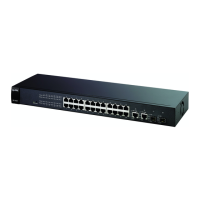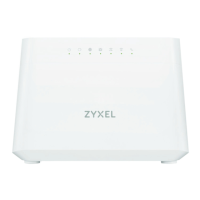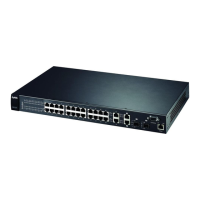Ethernet Switch CLI Reference Guide
193
CHAPTER 46
MSTP Commands
Use these commands to configure Multiple Spanning Tree Protocol (MSTP) as defined in
IEEE 802.1s.
46.1 Command Summary
The following section lists the commands for this feature.
Table 111 mstp Command Summary
COMMAND DESCRIPTION M P
show mstp Displays MSTP configuration for the Switch. E 3
spanning-tree mode <RSTP|MRSTP|MSTP> Specifies the STP mode you want to implement on
the Switch.
C13
mstp Activates MSTP on the Switch. C 13
no mstp Disables MSTP on the Switch. C 13
mstp configuration-name <name> Sets a name for an MSTP region.
name: 1-32 printable characters
C13
mstp revision <0-65535> Sets the revision number for this MST Region
configuration.
C13
mstp hello-time <1-10> maximum-age <6-
40> forward-delay <4-30>
Sets Hello Time, Maximum Age and Forward Delay.
hello-time: The time interval in seconds between
BPDU (Bridge Protocol Data Units) configuration
message generations by the root switch.
maximum-age: The maximum time (in seconds) the
Switch can wait without receiving a BPDU before
attempting to reconfigure.
forward-delay: The maximum time (in seconds)
the Switch will wait before changing states.
C13
mstp max-hop <1-255> Sets the maximum hop value before BPDUs are
discarded in the MST Region.
C13
mstp interface port-channel <port-
list> edge-port
Sets the specified ports as edge ports. This allows
the port to transition to a forwarding state
immediately without having to go through the
listening and learning states.
Note: An edge port becomes a non-edge
port as soon as it receiveds a Bridge
Protocol Data Units (BPDU).
C13
no mstp interface port-channel <port-
list> edge-port
Sets the listed ports as non-edge ports. C 13

